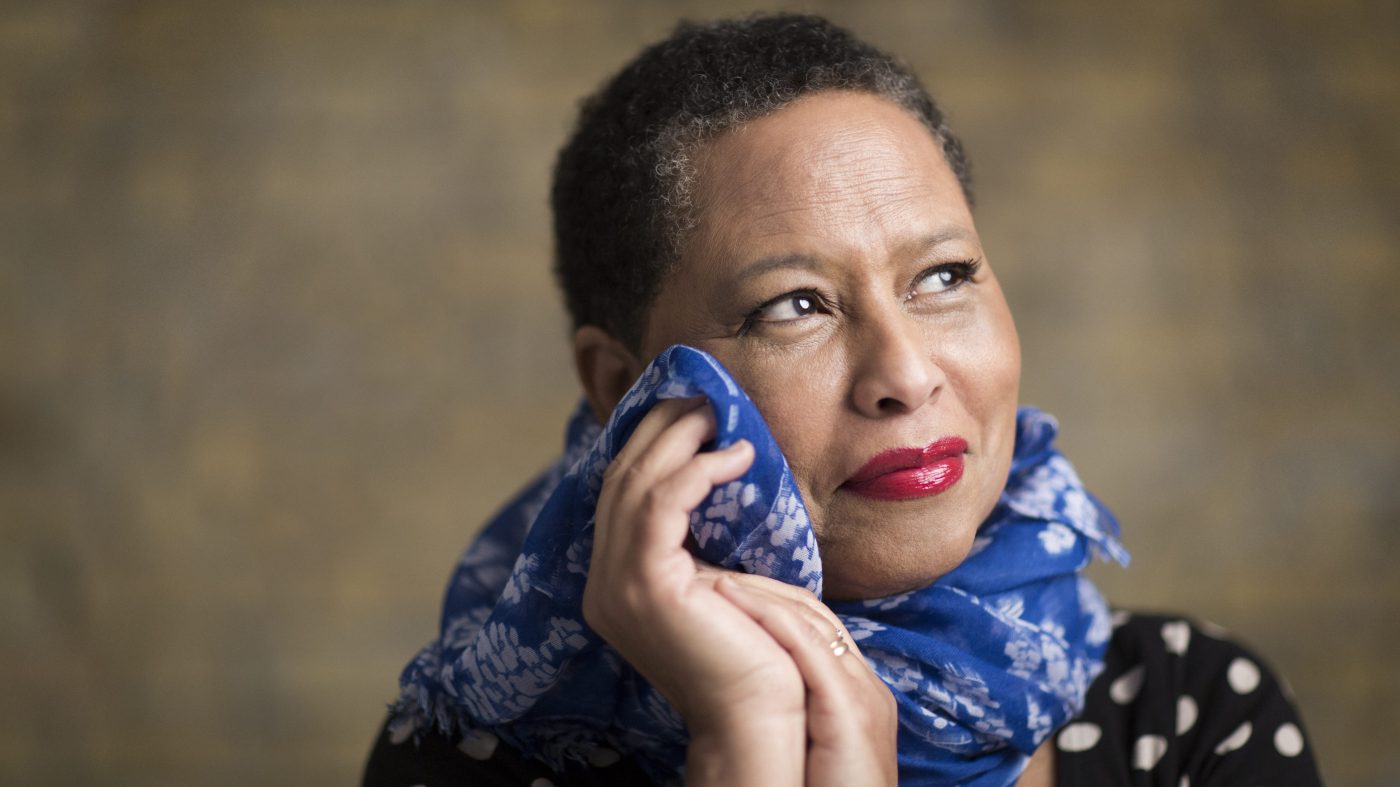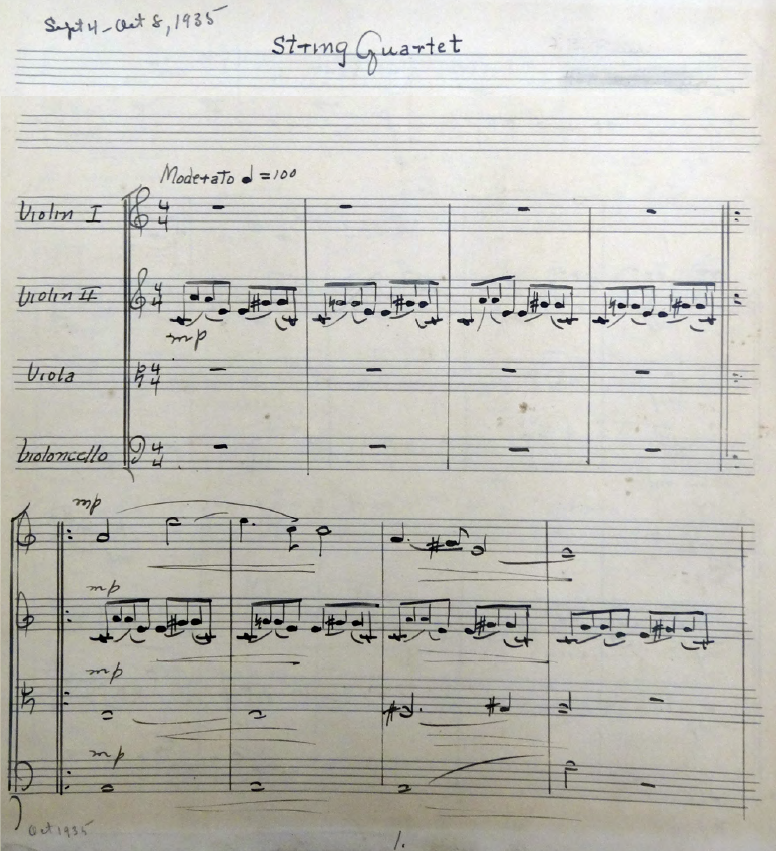|
by Anthony R. Green For the past years, both Castle of our Skins and myself have been big fans of Renée C. Baker and her incredible open, explorative, statement-making music. Castle has included two works of hers in our bigger productions, and we are looking forward to premiering a new work next year. Individually, Ashe has performed a work of hers, and I have performed 2 works of hers multiple times and in diverse interpretations. Below, check out one of my performances of one of her recent works R A G E. This performance comes from a performance at the Emery Community Arts Center Black Box Theater in Farmington, Maine. Enjoy! Stay tuned to BIBA for a longer feature about Ms. Baker in the future. For now, enjoy R A G E, and be sure to explore her website!
0 Comments
by Anthony R. Green It was Ashe Gordon who first brought the incredible Eleanor Alberga to my attention, and without a doubt my fandom has grown every day since. Castle of our Skins has programmed some of her works in concerts and community events, adding to the rich repertoire of Black composers that COOS features and celebrates. Recently, Ms. Alberga and her skillfully crafted, emotionally piercing music has received some much deserved attention. Read below, and take some time exploring the colorful, passionate world of Ms. Alberga! Firstly, this past June, Ensemble Arcadiana released a recording of her String Quartets 1, 2, and 3 on Navona Records! The performance by these musicians really does bring life to these extremely potent, present works. Alberga shines in her rich, multidimensional palette of colors, textures, and vernaculars, at ease with pushing harmonies to their disonant extremes as well as pulling back harmony to its original, tonal routes. I cannot recommend this album enough!
Secondly, Ms. Alberga has had some exciting and recent lengthy interviews. The first I want to highlight is from Sound and Music (click here for the YouTube link!), an organization in the UK, where she currently resides. The second feature is from the incredible Listening to Ladies podcast (which BIBA has featured in the past). Their 29th episode features an interview with and the music of Eleanor Alberga, with an incredible bio and informative links to explore and grow. CLICK HERE FOR THE LISTENING TO LADIES PODCAST LINK! Thirdly, remember when Ms. Alberga had an incredibly powerful work performed at the BBC Proms? This one performance marked one of the first times that the proms has had a piece performed that was composed by a Black woman - and this piece is grandiose! It is a celebration of women, and it perfectly exploits the dense possibilities afforded by chorus and orchestra composition, all while remaining true to Ms. Alberga's voice. Watch this performance here! Lastly, be sure to follow Ms. Alberga on social media! Her twitter handle is @Eleanor_Alberga, her SoundCloud page is: https://soundcloud.com/eleanoralberga/ , and her Facebook Fan Page is: https://www.facebook.com/composereleanoralberga/ ENJOY YOUR EXPLORATION! Happy BIBA Sunday everyone! This post, while available for everyone to read, is pointed to composers of African heritage or people who know composers of African heritage. COOS wants to know who you are and what music you are making! We also want to potentially perform your work if it can fit into any one of our usual performance events ("Edu-tainment" recital, collaboration, house concert, college residency, interactive production, etc ... ). Would you like to submit to Castle of our Skins's Open Call for Scores? Read below for some tips! (photo by Colin Conces)
Tip one: read the call HERE! While the call is pretty detailed, there are some comments worth adding here in this blog. COOS advocates for Black composers and composers of African heritage. Therefore, if you have a burning desire to send us something that perhaps seems outside the scope of what COOS does, but your gut is telling you to send it, then please send it. COOS never knows who will want to collaborate with us, therefore you and we cannot know if a score, for example, to an opera with full orchestra and 15 singers can fit into our programming. However, there may come a chance for such a work to be considered. In other words, it is better to take the shot because if you don't, you will always miss. Tip two: if you have any questions, please do not hesitate to ask. Your questions can be about anything, including alternatives to sending us a score if the digital option is not ideal. COOS has accepted post submissions in the past, and we will gladly do so for this open call. Do not hesitate to reach out for any reason. Please expect a reply within 10 days. Tip three: do you have works that may fit into a certain theme or may pair well with other works which we have programmed? COOS has a its full season posted as well as a past repertoire list. If you feel comfortable to make suggestions for a good context for your piece, then please do so! An example: Hello, my name is Black composer X and I am submitting awesome string quartet y to your open call for scores. I noticed that you are producing a project featuring African Composers. I am from Ghana, and I would love for you to consider including this work for that project. This type of additional effort will go a long way. Tip four: as THERE IS NO DEADLINE for this open call for scores, it may be easy to forget to submit a work because you are so busy submitting to other opportunities or working on other projects. Therefore, if you are considering submitting to COOS, I highly suggest you look at your calendar now, pick a free day to send something to COOS, and make that day your self-inflicted deadline. else you may always "forget" to apply or you might simply forget about the opportunity! (On a personal note, I do this for all the open-date calls to which I apply, and this method truly works for me.) Last but not least, GOOD LUCK! SPREAD THE NEWS! SEND US A SUBMISSION! WE LOOK FORWARD TO GETTING TO KNOW ABOUT YOU AND YOUR WORK! by Anthony R. Green As Castle of our Skins grows, our seasons become more and more diverse and full. (Have you checked out our Season 7 events?) One event about which I am particularly excited is Secret Desire to Be Black. For this event, COOS will bring back internationally acclaimed cellist Seth Parker Woods to play solo and chamber works. Among these works is Florence B. Price's String Quartet #2 in A minor from 1935, a significant, mature work that belongs in the repertoire of any professional string quartet who plays romantic music. 1935: 2 years after Price's awarding-winning Symphony No. 1 was premiered by the Chicago Symphony Orchestra, making her the first Black woman to have an orchestral work played by a major orchestra. Among Price's nearly 300 works, her orchestral and vocal (including choral) repertoire seem to have been her main focus. However, the A minor quartet is her second string quartet, arriving 6 years after her first and beloved String Quartet in G major. After such an important prize as the Wanamaker, which directly resulted in her Chicago Symphony Orchestra performance, it is no wonder why Price may have modelled her second string quartet after her first symphony.
Both the Symphony #1 in E minor (1932) and the String Quartet #2 in A minor (1935) are structured in 4 movements: a moderato introduction, a slow movement, a Juba dance, and a fast finale. While there are no similar long passages, it is clear that the compositional approach to both works is practically identical. In the quartet, the first movement starts with an ostinato that informs and supports the melodic and harmonic tragectory of the movement. After a brief pause, Price's bold, unapologetic romantic chromaticism appears in a way that it does not (and perhaps cannot) in her first symphony, and the introduction propels the listener on a musical rollercoaster that foreshadows the remaining three movements. The second movement's relaxed world provides a repose from the present first movement. With warm, lush melodies, and fragrant harmonies that are rife with familiarity, the second movement is a comfort for the audience. The third movement invites movement, as it is a Juba. This type of dance developed in the Americas from Africans who were brought there against their will. Dancing and vocal music was a form of survival, and Juba is a grandparent of hambone and contemporary step dancing (often found in fraternities and Black churches). Price's Juba is firmly within this African American Folk music tradition, and serves as a fine transition to a powerful finale. The last movement of this string quartet sums up the journey, but this time in a triple meter, different from the previous three movements. It is virtuosic, colorful, meaty, and inspired. Throughout this work, Price's African American Folk vernacular shines. It is used to speak directly to the listener, as well as to employ complex counterpoint and harmony. Such approaches find their way into future works, notably the Five Folksongs in Counterpoint, which is also a string quartet. Be sure to check out COOS's musical exploration at the Gardner museum, as well as all the other, many events of this 7th season! |
Details
Writings, musings, photos, links, and videos about Black Artistry of ALL varieties!
Feel free to drop a comment or suggestion for posts! Archives
May 2024
|
Member Login
Black concert series and educational programs in Boston and beyond




 RSS Feed
RSS Feed










